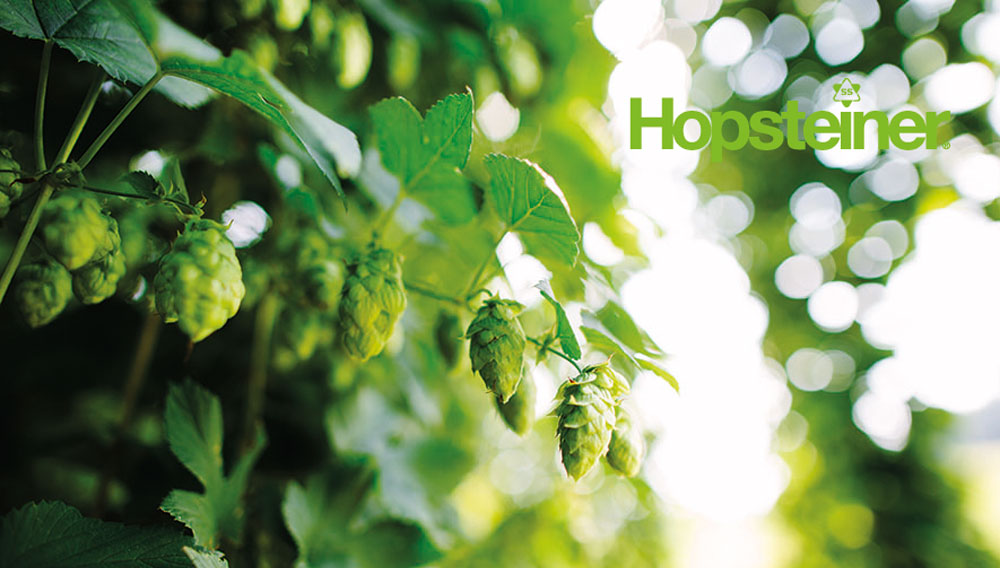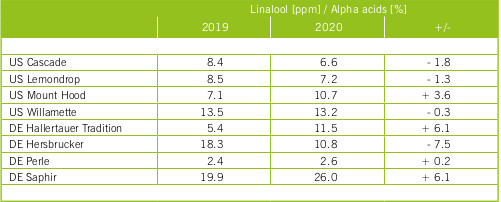Variations in hop aroma depending on crop year
Technical Support | As usual in December, we are pleased to share some data of the hops’ compositions
which is important to achieve consistent hop aroma in beer, especially when changing
from one crop year to another.
Based on the addition of the same quantity of bitter substances towards the end of boil,
the resulting late hop flavour might vary. Therefore, the ratio of linalool to alpha acids is
recommended to assess the aroma intensity (see also previous December newsletters).
For the shown varieties often used in late hopping (Fig. 1), fluctuations of the hop aroma
intensity are unlikely for Lemondrop, Cascade, Willamette and Perle. Attention should be
given if late hopping is done using Mount Hood, Hersbrucker, Hallertauer Tradition or
Saphir. For the positive values a higher aroma intensity can be expected if hop dosage
remains the same, in case of negative values (like Hersbrucker) more hops should be
used to match the current sensory profile.
In addition to the previous years, we have also listed some hop varieties that are often
used for dry hopping. This hop addition is often based on the total amount of hop oils
and not on single components.
If you are keen to learn more about the current data of your hop varieties, please do not
hesitate to contact us! ()
Hoppy X-mas




